I picked up Rodimus Prime, my Tesla Model 3 Standard Plus, on Saturday August 3rd 2019. There were 14 miles on the speedometer.
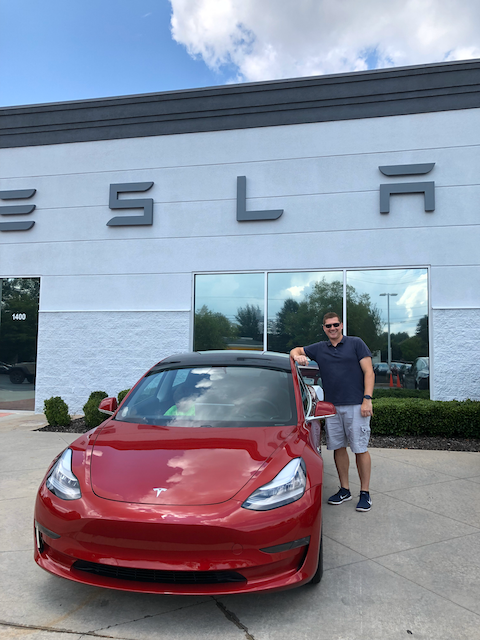
I’m the first in the family to own a Tesla and was excited to show the car off that night. Everyone wanted a test ride. We had a great deal of fun playing with the initial release of Autopilot and all of us were blown away by the car’s acceleration. The interior received mixed reviews but anyone looking up at the all glass ceiling loved the view.
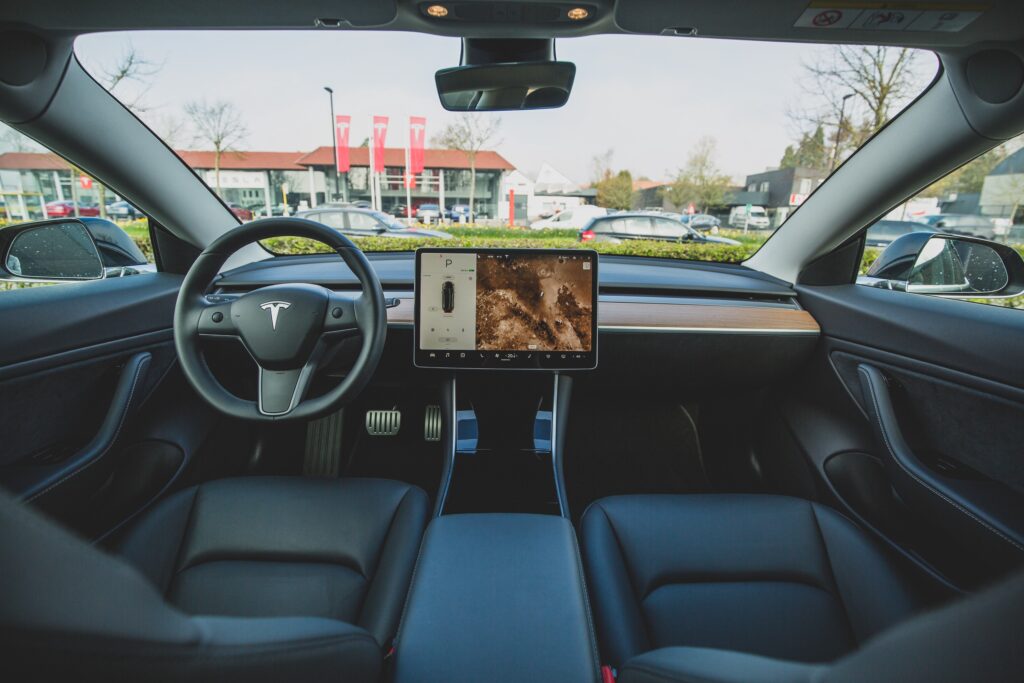
Most of the family smiled or let out a gasp at how few buttons and knobs and switches there are in this thing. Everyone laughed when each of the seats let out large farts. Rainbow road was an instant favorite. All said that day I drove the car for about two hours total and I’m not sure if my smile ever left my face. I came home, plugged the car in to charge and went about my day. The next morning I woke up to run some errands. The car would not power on.
Tesla repair shops are closed on Sunday, but the Tesla smart phone app allows one to request 24/7 roadside assistance. Through the roadside assistance process the person I spoke with gave me a few troubleshooting tips to try while I was on the phone. I smiled when one of those turned out to be a reboot of the car. When the “soft” reboot didn’t work, we tried the “hard” reboot. When none of those worked a tow truck was dispatched to tow the car back to the Tesla repair shop. I’m fortunate that the Tesla Repair shop is less than 15 minutes from my front door and it also happens to be the place I picked the car up from. That has been fortunate as I would be making frequent trips there over the next few weeks.
Getting the car towed was its own adventure because when there is no electricity to the car, the brakes won’t disengage so the car was literally dragged across the driveway on to the tow truck. This process scuffed my driveway rather badly and left visible marks on the wheels of the car.
The car sat untouched at the repair shop for 3 days. Tesla provided zero communication with me until the following Tuesday. The brief call explained that there was definitely something wrong with the battery and that they would diagnose the problem and get back to me. A few hours later I was asked to come to the dealer where Tesla would be giving me a loaner car. I arrived at the dealer and was placed in a Blue Model S P95D seen here:
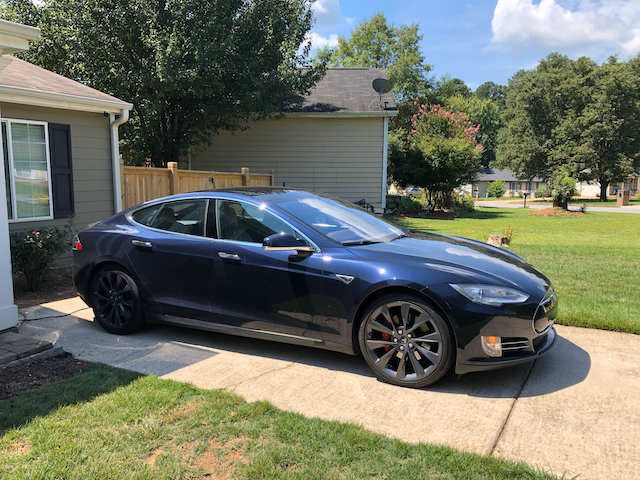
I’ll spare you the long version of the tale. 29 days later Rodimus Prime made it back to my driveway with a brand new battery pack and, unknown to me at the time, 11 months of free supercharging. A long line of apologies from Tesla came with it.
I treated the previous 29 days with the Model S as a learning exercise and came to understand the Tesla operating system and its many, many quirks. When Rodimus finally came back home, it was a huge adjustment.
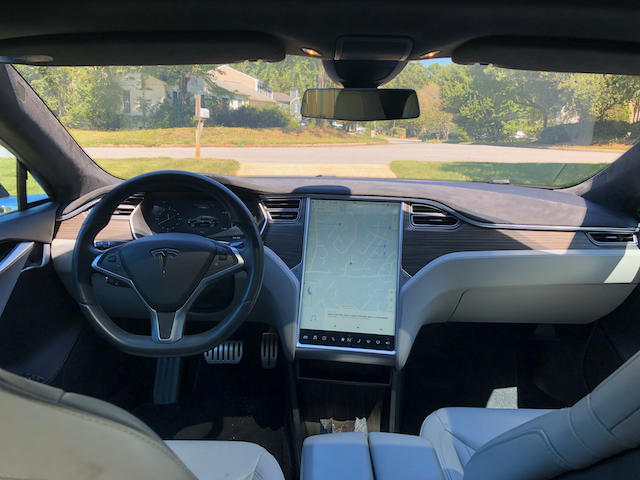
Rodimus doesn’t have the Model S Ludicrous mode but in every other way I love the design of the Model 3 far more than the Model S. I think the rest of my family thinks I’m nuts, as most of them got to experience Ludicrous mode. I can confirm that the seats in the Model S are far more comfortable than the Model 3 seats, especially for long commutes. The Model S is a more spacious car being both wider and longer than the Model 3. Here’s the thing though: the Model S still feels like every other car on the market except that you don’t use gas. It’s nice and fast and drives well, but it’s just a car. The Model 3, from the moment you open the handles feels like the future of automobiles. I’m a big fan of the future.
I spent the next 10 months learning the ins and outs of commuting with an electric vehicle. My girlfriend lives in Chattanooga, I live in Atlanta. It’s an 89 mile commute from my front door. I’ve made the commute 124 times. In the map below you’ll see we took a few small road trips in between.
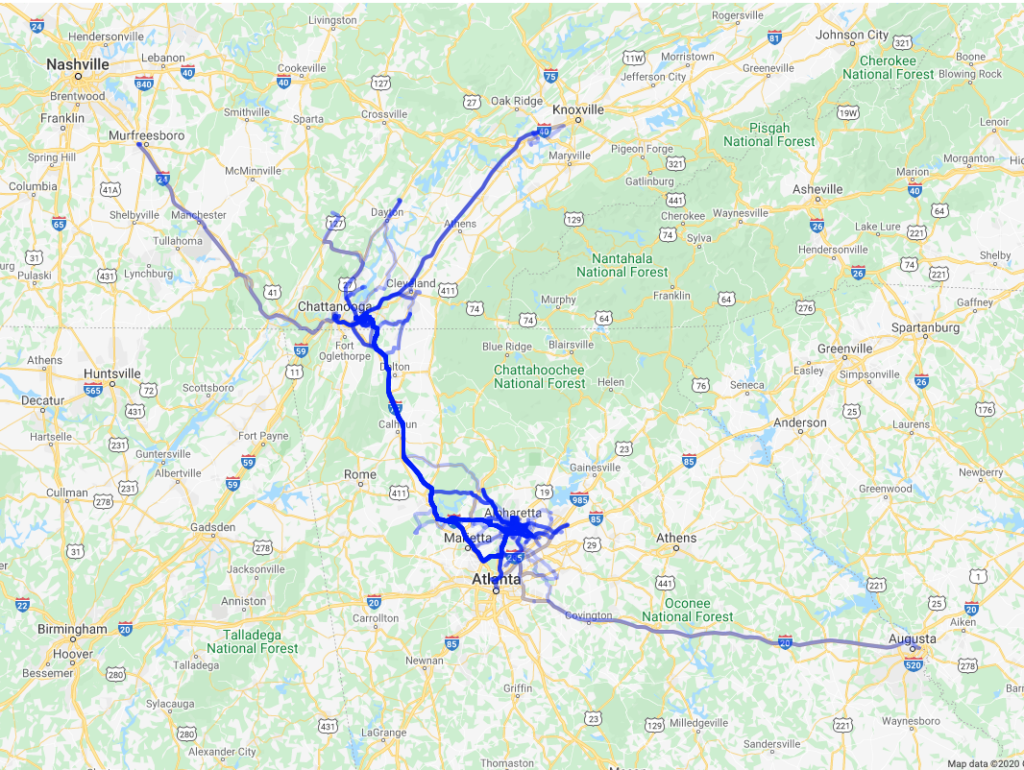
During this 10-month period the car has received 28 over-the-air software updates. Sometimes those are minor bug fixes, other times they introduce major new functionality. I had purchased Full-Self Driving (FSD) and this has been the area of the car that continues to receive the most updates. Interstate 75 and Hwy 92 have been a wonderful test bed for everything from AutoPilot lane changes to the new traffic stop light driving. If you’re not familiar with Hwy 92, there are 67 stop lights from the Acworth exit over to the GA 400 exit and the road is mostly a straight line making it a perfect candidate for beta testing. My girlfriend disagrees with everything I just wrote: beta testing a car is not for her. We’re at a point now where she basically tries to read a book, or “rest her eyes” or basically anything other than watching the road when I’m letting Rodimus Prime do the driving. I think the real problem is that Rodimus Prime is a late breaker and I think she simply doesn’t trust that the brakes actually work. I’ll admit though that the self driving features are still labeled Beta software and the car still very much drives itself like a dumb teenager.
During this time I learned that “phantom braking” is a real thing. As the name suggests, when Rodimus is driving suddenly for what appears to be no reason at all he just decides to slam on the brakes. I can tell you there is nothing that stops your heart faster than doing 85 mph on the Interstate, being the only car on the road for miles, then out of the blue your car just slams on the brakes. This is one problem Tesla has got to fix.
But most of all I learned that driving is over rated and there’s great joy in letting Rodimus do all the work while I sit back and listen to my audio book. I’m very much looking forward to the day where I can “rest my eyes” while Rodimus gets me where I’m going. Tesla fan-boys says that will happen before the end of 2021. Tesla pundits say it will take a brand new design of the car and will take until at least 2025. We shall see.
A year later, my only regret about the car is that at the time of purchase I was not in a position financially to afford both the extended battery range and the Full Self Driving (FSD). I had to pick one. I chose FSD instead of the extended range battery. The argument against choosing FSD is that you can always add FSD later via over-the-air-software-update, but you can’t add the extended range battery without buying a different Tesla Model 3. My logic at the time was that I wanted a car that drove itself more than I needed the extra battery capacity. What I did not understand at the time of purchase is that you are not supposed to charge the battery to 100% each day; instead you are supposed to charge it to somewhere between 50% – 95% in order to maximize the longevity of the battery, which by the way comes with an 8 year warranty. At 100% charge Rodimus can drive 229 miles. At 50% battery, Rodimus isn’t going to get you from Atlanta to Chattanooga without at least one stop at the Acworth Tesla Super Charger. This one stop for charging adds 30 minutes to 1-hour to the commute (depending on how full you want your battery to be when you get to Chattanooga) as the Acworth Super Charger is a version 2 charging station. Eventually the Super Charger will be upgraded to a version 3 and that charging time should be cut in half (in theory). In the mean time it turns my 1.5 hour commute into a 2 hour or longer commute. The extended range battery would have helped with the commute.
Range Anxiety and a lack of charging stations are also a real concern for EV’s in the Southeast. In the last year I’ve participated in Facebook Tesla Groups, Tesla.com message boards, and I now have several friends who own Teslas that live in different parts of the US. The truth is that if you live outside of major cities EV charging stations are few and far in between and the southern US is not all that friendly to an abundance of charging stations. That trip to Dayton Tennessee on the map above was one of those moments where Range Anxiety hit pretty hard. That morning I started with 100% charge and when we arrived I had less than 5% battery. The town had exactly 4 charging stations, all operated by Blink, and 3 of them were broken. There are so many gas stations in the US it’s hard to imagine not being able to find gas when you need it and until EV charging stations become that common place, not having the extended range battery can add some stress to the driving experience. Tesla is doing a wonderful job maintaining its own SuperCharger network and continues to expand it, most recently completing a new “urban” supercharger at the Avalon mall which is 10 minutes from my front door. Other software improvements are helping with Range Anxiety for example in September of 2020 Tesla updated the car’s GPS to show 3rd party charging stations but they still haven’t gone far enough with the feature as the car’s Route Planning feature which is supposed to find you charging stations along your path still only works with Superchargers. The result is that route planning smartphone apps like ChargePoint, PlugShare, and Blink are not nice to haves they are essential components of your long distance trips. It’s become routine for my girlfriend to ask before we go anywhere “does your car have enough juice to get us where we are going?”
The other area that people always ask me about is how much it costs to charge the car. This is hard for me to answer. I don’t have to charge the car every day, in fact I can often go a week or so without plugging it in if I’m not commuting to Chattanooga. It’s not like your cell phone where you have to charge it each night or you don’t get to use it the next day. To date I’ve charged Rodimus 371 times at 13 different locations. 250 of those have been my house, 107 have been my girlfriend’s house. TeslaFi.com tells me I’ve added 3,316.99kWh to the car from my house and my girlfriend’s house. As to what this energy actual cost I’m a bit embarrassed to be blind to this for several reasons. I have no visibility into my girlfriend’s power bill for those 107 charges. I’m also missing an advanced degree in math to translate how Sawnee Electric bills me for energy. I have only a few months of energy bill records for 2018 which is the prime year of comparison necessary to paint an accurate picture. The best I can offer is a pretty picture. In the chart below is the dollar amount I pay a month in home electricity. Blue is 2018 (before the car), Green is 2019 (with the car) and Yellow is (2020).

At first glance I’m clearly paying more a month for electricity in 2020 overall, but is that really Rodimus Prime’s fault? I don’t think it is. Remember that Covid struck so self-quarantine for going on 6 months is certainly a large part of this higher usage. What’s not shown in the chart is the cost of having a Tesla-certified electrician install a 220Amp plug for Rodimus so I can go from 5% battery up to 50% battery in under 4 hours. This was a $2,000 expense because it required replacing the outside electrical panel at my 36-year old home.
When Rodimus is in Chattanooga, my girlfriend lives 15 minutes from the Chattanooga Airport where a Tesla Supercharger is, so when we were quoted $1,500 to add the same charger I have at my house to her house we decided charging at the airport would make more sense financially. Given that I’ve been Supercharging for free for 11 months it was an easy decision. However in practice, this means that every time I need to return to Atlanta, I spend an extra 50 minutes at the airport charging the car. This is also due to the Supercharger being a Gen 2, not a Gen 3. So with time that 50 minutes should decrease to 20 minutes.
I should also mention that you can just plug the car up to what I call a normal 3-prong wall outlet, no special wiring or adapters needed. I’ve experimented with using the standard A/C plug to charge the car and it takes 12 hours to reach 50% battery. That’s not the end of the world considering I should be getting 8-9 hours a sleep a night, but at my girlfriend’s house doing this requires us to leave the Tesla in the garage and use her car for outings for that first day. I can then go from Chattanooga to the Tesla Super Charger in Acworth and only have to charge for 20 minutes to make it back to my house with about 15% battery to spare. This has been working well, but on July 31st my free supercharging came to an end so I’m going to be monitoring this closely over the next year.
Supercharging is another animal. If you show up at a Supercharger where there are 6 plugs (skipping the technical explanation) only 3 plugs can be used at the same time without slowing down other Tesla’s charging. So when you pull into a Supercharger you hope it’s at half capacity or less. Acworth and the Chattanooga Airport are at the sweet spot – 95% of the time I’m the only one there, so that works out for my 50 minute wait, but in recent weeks I’m seeing more and more Model Y’s starting to show up and those require longer charging times. This is only going to get worse as more Tesla’s hit the road. If Tesla can scale up their rollout of the Version 3 Superchargers they should be able to keep up with the demand. The big change with Version 3 is that all 6 plugs can be used at the same time and since Version 3 charges faster you spend less time charging. So how often have I supercharged?
In the first year I’ve visited 7 different Super Chargers for a total of 59 times. I’ve paid Tesla a grand total of $6.34. Outside of the Tesla Supercharger network I also made it to 8 Chargepoint locations for a grand total of $2.99.
Think about your auto gas bill for the last year. In 2018 before the Tesla mine was $892.74. I should note that I drove an Audi A4 that required premium gas. Compare that to $9.33 for a year of driving and that’s a huge savings. But to be fair, I can’t ignore the home electricity costs (which are kinda unknown) plus the installation costs for the home charger. I’ll have to re-visit this topic next year when I’ve actually had to pay for a year worth of Supercharging.
On August 2nd Rodimus had his 1-year birthday. Here is how he is doing:
- 16,625 miles
- Complete battery replacement
- Two new rear tires (the driveway scraping tow trunk incident)
- Two tire rotations
- One refill of the windshield wiper fluid
- One trunk liner replacement (Upcoming blog post on this one)
- One Tesla Mobile repair visit to my house to fix the rear coat hanger hook mechanism that was mis-aligned. This turned out to be due to a missing plastic connector so this was literally a 3-minute fix to install a new plastic hook thing-a-ma-jig
And then August 3rd happened.
On August 3, I noticed that Rodimus is a bit out of alignment, pulling slightly to the left when driving. I scheduled a service visit to Tesla for 9:00 AM. The techs confirm Rodimus is out of alignment, they align him, and I get him back later that afternoon. No big deal. I drive it home and things seem fine. I wake up on August 4th to do some errands and the car won’t start. Just kidding. It starts fine, but as soon as I pull onto the main road the car is violently jerking to the right, completely changing lanes on its own when it’s not supposed to. This is not good.
Back at Tesla, the Tesla techs are wonderfully patient human beings. In this instance the tech asks me to ride with him for a test drive in my car so he can confirm the behavior I’m describing. Something is definitely not right. So I’m setup with another rental Tesla. This time I get another Model S – the less powerful P85D but in a much nicer shade a blue than the one from a year ago.
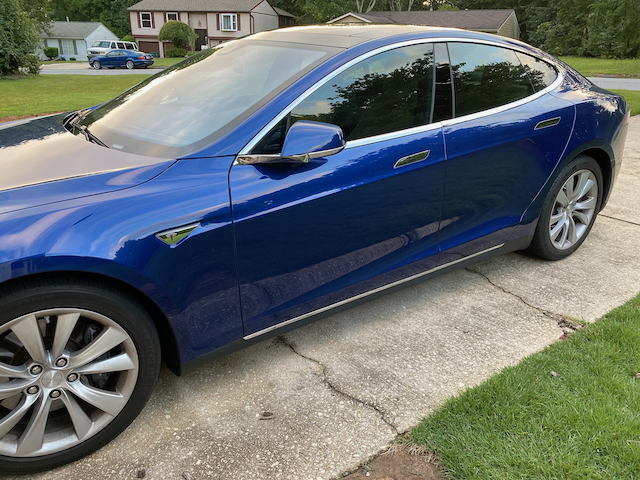
In the year that has transpired since my last Tesla loaner car, Tesla has gotten smarter about their loaner cars. No longer are they unlocked beasts of power, instead they are locked down to Chill mode and restricted speed limits. Do you know how annoying it is to be locked into 85 mph on I-75 North? I was getting passed by school buses. No joke. Safety first though right?
I had expected to be in the loaner for a day or two. It’s an alignment issue, how hard can that be to fix!? Famous last words though because this turned into a 9-day parts replacement game.
When the alignment wouldn’t hold the Steering Rack was replaced (Tesla calls this a Steering Gear Assembly) and the alignment was redone. When that didn’t fix it Tesla replaced the Steering Column Control Module and ran through another round of alignment tests. More adjustments to the steering column and a few more rounds on the alignment machine and Rodimus is able to drive straight again. So after a 9-day delay Rodimus came home again.
A year into ownership I love the way this thing drives, I love the technology, and overall I would recommend everyone buy a Model 3. That said, I’m two major repairs in which is a concern. The car comes with a 4-year warranty and an 8-year warranty on the battery so for the next 3 years I don’t have to worry about the financial impact of major repairs, only the time lost dealing with them, should they come up. I’m hopeful that I’ve just been unlucky with the two major repairs and that the next year will be free from problems.
If you want to join the club and buy a Tesla, use my referral link to receive 1,000 free Supercharger miles with the purchase and delivery of a new Tesla car, or earn a $100 award after system activation by purchasing or subscribing to solar panels by clicking the Link below and completing your purchase online:
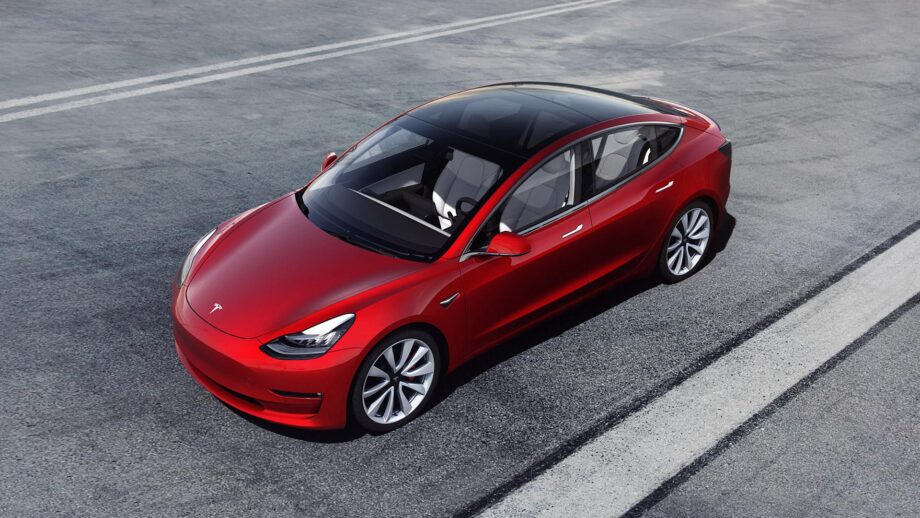


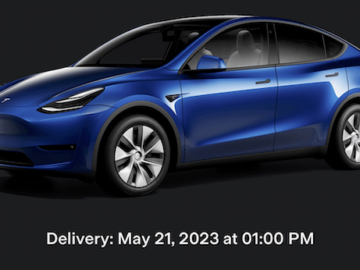
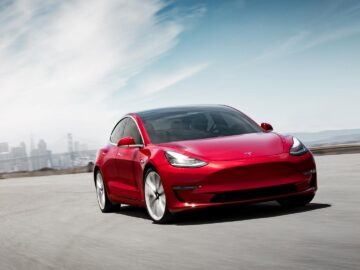
1 thought on “Tesla Model 3: One Year Later”